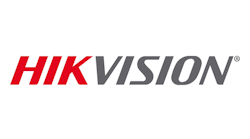Editor’s note: This is the first article in the new "Executive Perspectives" Q&A series, a collaboration between SecurityInfoWatch.com and Security Dealer & Integrator (SD&I) magazine, featuring in-depth interviews with some of the security industry’s most well-known corporate leaders.
The rise of Hikvision from a small, relatively obscure maker of video compression cards to what is now the world’s leading provider of video surveillance technology is a testament to the company’s relentless commitment to innovation. That dedication to research and development has enabled Hikvision, in less than two decades, to grow its footprint exponentially around the globe, including in North America where its products have been well-received by many end-users and integrators.
However, the company’s entrance into the market has not been met with fanfare by all. In fact, some blame Hikvision and other Chinese-based manufacturers with substantially driving down the price of video hardware and thus eroding margins industrywide. There have also been concerns about cyber vulnerabilities that have been discovered in Hikvision products and the potential risks that organizations leveraging those devices are opening themselves up to.
We recently caught up with Jeffrey He, president of Hikvision USA Inc. and Hikvision Canada, Inc., to get his thoughts on the current price pressures facing the video surveillance industry, what the company is doing to address cyber concerns, and the innovations that may be forthcoming from Hikvision in the future.
Q: Both manufacturers and systems integrators alike have bemoaned the so-called “race to the bottom” that the video surveillance industry has experienced in recent years, and they have specifically identified Hikvision and others as contributors. Do you believe there are real, underlying dangers in the price wars that are going on industry wide?
He: We need to look at the global markets for any meaningful price analysis. If we narrowly eye the North American market only, it is easy to misinterpret global trends. Out of all global markets, Hikvision product prices in North America have been among the highest. Downward price pressure comes from competition, the grey market, online outlets, huge price differences compared to other global markets, and, of course, technology advancements.
We believe that the availability of more cost-effective products and solutions will further encourage end-users to spend on enhancing security and operations. This in itself brings more business to the integrators. By being narrow-sighted in their analyses and not seeing a broader picture, some manufacturers bury their heads in the sand. The risk for North American security industry players is to continue to stay myopic to the global market changes – being unwilling to prepare and not being capable of handling these global changes that have a direct effect on us in the region.
Along with that, as today’s price pressures continue to eat into the margins of systems integrators, what advice would you give integrators specifically to help offset these changes in their profit potential?
As I mentioned before, technology advancement is one of the key factors driving price changes. At the same time, this evolution in technology provides incredible opportunities for the enablement of new applications. As such, manufacturers and integrators have to keep up with changes in technology and they need to provide solutions to better fit the ever-changing and increasingly challenging global security environment. I firmly believe that end-users will welcome more effective security solutions, even if those solutions require a premium.
Another big issue for all aspects of our industry is cybersecurity, and Hikvision – along with many other video surveillance manufacturers – has been forced to directly address this issue due to specific and/or general cyber vulnerabilities. What specific steps have been (or are currently being) taken to close these vulnerabilities, and will these fixes also apply to Hikvision OEM products as well?
As of Oct. 2017, eight vulnerabilities were listed as associated with Hikvision, according to the CVE (Common Vulnerabilities and Exposures), the industry standard in identifying publicly known security vulnerabilities. This is out of well over 200 vulnerabilities associated with different video surveillance equipment manufacturers. Each one of these eight vulnerabilities was addressed promptly with firmware updates. We also issued mass notifications to our partners via email, phone calls and website notices.
In addition, Hikvision established and expanded its Security Lab. Together with third-party penetration tests, process reviews with Cisco and EY, and operations with security researchers, Hikvision has dedicated significant resources to enhance the security of our products. Hikvision has reviewed historical products, and set up procedures in the design process. In terms of OEM partners, we are fully committed to them.
As the largest video surveillance manufacturer in the world and a leading supplier in North America, Hikvision has the responsibility to lead the global security industry to enhance cybersecurity defense against potential threats.
I must point out that there are misperceptions about Hikvision. These misperceptions were intentionally spurred by a single source which misleads our community on the real risks we are all facing. That third party is here to distract from combatting criminal and terrorist activities which should be the main focus of the security industry. Even worse, that third party provided step-by-step video tutorials on how to hack vital security equipment on the end-user premises. This is the most outrageous behavior I have seen in my 27 years in the global security industry.
Q: We’ve seen a lot of consolidation in the video surveillance industry in recent years. How has M&A affected Hikvision as it competes in the market, and do you think the company will make a few acquisitions of its own?
He: Hikvision has a massive R&D operation – with nearly 10,000 engineers – and we reinvest between seven and eight percent of our profits into R&D annually. We have opened the first R&D Center in Montreal and a Research Institute in Silicon Valley. Our growth has been mainly organic in the past; however, we always keep our eyes open if an appropriate opportunity comes along.
Q: Many people may not realize that Hikvision has a broad range of security solutions that extend well beyond video surveillance. Will some of these products be introduced into the U.S. market, and if so, what products will we see first?
He: We introduced IP intercom and access control that fully integrate with Hikvision NVR/DVR video systems at ASIS in September. We have a machine-vision related product called UVIS (under vehicle inspection system) that can be used for access control at the entrance to facilities to detect objects under a vehicle. We were showing that at ASIS and will have that in North America in 2018. We released an Ethernet cable product this month. We also plan to release Intelligent SSD, portable NAS and Home NAS this quarter. Products we plan to release in 2018 include a doorbell camera and a body-worn camera.
Hikvision is one of the major security industry players in North America. In the last 10 years, we focused on establishing infrastructure to support our dealer/integrator partners, elevating our brand and building a foundation for further expansion. We demonstrated success in the small and medium market and are prepared to bring more innovative products and technologies to other market segments.
Q: Hikvision displayed machine vision cameras/equipment at ASIS this year. Do you see this as a potential growth market for integrators or the security industry?
He: Yes, although for the most part, the machine vision industry is a distinct industry from video surveillance and physical security. It is used for factory automation, production inspection, defect detection and high-speed reading. The target customers would be machine vision system integrators, machine builders or vertical solution system providers. There are general system integrators who do both surveillance and machine vision projects, which is why we exhibited the technology at ASIS.
The key business opportunity for current Hikvision (security) integrator partners will likely come from a derivative product, the UVIS (under vehicle inspection system), which we also showed at ASIS this year. It can be used for access control at the entrance to a corporate building, shopping mall, border patrol or critical infrastructure entrance. We plan to release UVIS soon. It will be integrated with our NVR with LPR solutions.
Q: What are the biggest trends moving forward in video surveillance and how is Hikvision poised to take advantage of those?
He: We see Artificial Intelligence (AI)/Deep Learning as the key trend moving forward in the security industry. Video content analysis software has been promoted as a way to curb false alarms and improve detection and prevention in security applications. Our goal is to lead the way with deep learning products that provide end-users with the most reliable and accurate video content analysis. Hikvision’s new DeepinView security camera series and DeepinMind NVR series of products apply deep learning algorithms to deliver some of the most accurate video analytics in the market today.
Hikvision’s AI/Deep Learning applications help with people counting, traffic management, license plate recognition, entry and exit management, and more. Accurate human detection, face detection and recognition, and behavioral analysis are all enhancements we offer to our customers through the application of deep learning technology in our products now offered in North America.
I should also mention the analog side of video surveillance products, where Hikvision brings TurboHD, the HD-TVI technology that provides high definition video. This helps end-users to extend the life of analog systems and get high definition without upgrading to IP or replacing their existing cabling structures.
Additionally, low-light technology is another topic of interest in the marketplace. Hikvision’s original DarkFighter technology delivers low-light color imaging, but the new DarkfighterX brings it to a completely new level. It’s one thing to be able to see low-light color images, but to be able to see the color of clothes or color of a vehicle at night enables true 24/7 surveillance. And, of course, clear images deliver better data, which can be used to create better analytics technology.
Q: What are your integrators and partners asking for in terms of R&D, new features and technologies in the video surveillance areas?
He: Our customers are interested in integrated solutions. Our video intercom and access control products are now available in North America and add nicely to the existing product portfolio to provide a more complete solution for end-users. We also started offering HikCentral, a central management platform that integrates with third parties and can manage very large numbers of cameras, up to 100,000. They want a complete solution from Hikvision, and solutions that are tailored to vertical markets. One reason our customers prefer a complete Hikvision solution is because they rely on our extensive network of technical and engineering field support and service.





